| 






©2003
Gilder Technology Report,
a joint publication of Gilder Publishing LLC and Forbes, Inc.
All Rights Reserved. |
 |
Gilder's
Book of the Month Archive
Gilder's Book of the Month recommended reading list ispulled from George
Gilder's own library. All books are available for purchase through Amazon.com.
Click
on any book to order now at

|
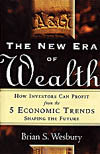 The
New Era of Wealth The
New Era of Wealth
How
Investors Can Profit from the 5 Economic Trends Shaping the Future
by
Brian S. Wesbury
The
first book with a Telecosm List, a supply-side tilt, and a Greenspan
critique, Brian Wesbury's pithy tome castigates the prevailing medianomics
and offers a felicitous guide for investing in the new economy.
—GG
|
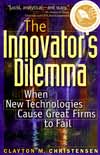 The
Innovator's Dilemma The
Innovator's Dilemma
When New Technologies Cause Great Firms to
Fail
By Clayton M. Christensen
"The
most profound and useful business book ever written about innovation,
it catapults its softspoken author abruptly into the class of Burnham
and Drucker."
—George Gilder, October 1998 GTR |
 Only
the Paranoid Survive Only
the Paranoid Survive
The Threat & Promise of Strategic Inflection
Points
By Andrew S. Grove
"As
a strategic fact, defining the conditions of the business and the
opportunities of the era, broadband is now. This is a fundamental
paradigm shift-an inflection point like those described in Andy Grove's
riveting new book, Only the Paranoid Survive."
—George Gilder, August 1996 GTR |
 Adventures
of a Bystander (Trailblazers, Rediscovering the Pioneers of Business) Adventures
of a Bystander (Trailblazers, Rediscovering the Pioneers of Business)
By Peter F. Drucker |
 The
Effective Executive The
Effective Executive
By Peter F. Drucker
|
|
 Being
Digital Being
Digital
By Nicholas Negroponte
|
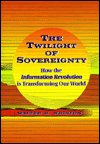 The
Twilight of Sovereignty The
Twilight of Sovereignty
How the Information Revolution is Transforming
Our World
by Walter B. Wriston
|
 The
End of Money and the Struggle for Financial Privacy The
End of Money and the Struggle for Financial Privacy
by Richard W. Rahn
Former
Chief Economist of the National Chamber of Commerce, Richard Rahn
has peered deeply into the heated caldron of money, encryption, privacy,
bandwith and bureaucracy and emerged with a stark and stormy vision
of the future. This crisply written text foresees a concussive collision
of new technologies and old institutions, such as banks and nations,
debts and taxes, and a new world of web commerce on the other side. |
 Optical
Networks Optical
Networks
by Rajiv Ramaswami and Kumar N. Sivarajan
This
book is a lucid and practical exposition of the optics state of
the art by two protege's of Paul Green. Skip the denser math if
you want and you still can deepen your knowledge of this incandescent
field. You can also expose yourself to the thinking of Rajiv Ramaswami,
who is moving to Silicon Valley to guide an exciting startup in
optical switching, called XRos, into the frontiers of the telecosm.
|
 Feynman
and Computation Feynman
and Computation
Exploring the Limits of Computers
Edited by Anthony J.G. Hey
(not to be confused with Feynman Lectures on Computation)
This book contains
three seminal lectures by Carver Mead, who co-taught the course with
Feynman, and includes many vivid recollections of and by the world's
greatest physicist in interplay with the world's leading computer
scientists.
"For a successful technology, reality must take precedence over
public relations, for Nature cannot be fooled."
—Feynman on the Challenger disaster
|
 Computer
Architecture Computer
Architecture
A Quantitative Approach
By David A. Patterson & John L. Hennessy
A leader in the
debate over the structure of tomorrow's computers, "David Patterson
explained how many of the problems with current computer architecture
could give way to an intelligent RAM architecture. He favors use
of parallel vector processors programmable through the means familiar
in vector Cray supercomputers."
—George Gilder, October 1997 GTR
|
|
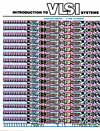 Introduction
to VLSI Systems Introduction
to VLSI Systems
By Carver Mead & Lynn Conway
|
 Feynman
Lectures on Physics Feynman
Lectures on Physics
By Richard P. Feynman
|
|
 Analog
VLSI and Neural Systems Analog
VLSI and Neural Systems
By Carver Mead
|
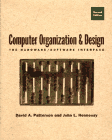 Computer
Organization and Design Computer
Organization and Design
The Hardware/Software Interface
By David A. Patterson & John L. Hennessy
|
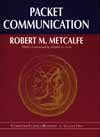 Packet
Communication Packet
Communication
By Robert M. Metcalfe
Bob Metcalfe invented ethernet
and was a founder of 3Com. His 1973 doctoral dissertation, Packet
Communication, is a classic text in the development of the communications
protocols at the core of the Telecosm.
"In the new paradigm, the Moore's Law advance of MIPS and bits
gives way to the Metcalfe's Law explosion of bandwidth." —George
Gilder, August 1996 GTR |
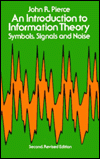 An
Introduction to Information Theory An
Introduction to Information Theory
Symbols, Signals and Noise
By John R. Pierce
"Shannon's work is
shrouded in hardcore math and the explanation can be skipped if
you want. But it is worth getting a glimpse of his vision. It is
most clearly expounded by his leading apostle, John R. Pierce of
Bell Laboratories, in a book called An Introduction to Information
Theory."
—George
Gilder, June 1998 GTR
|
|
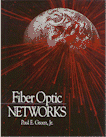 Fiber
Optic Networks Fiber
Optic Networks
By Paul E. Green
"the leading text on fiber networks"
—George Gilder, February 1997 GTR
|
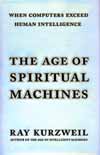 The
Age of Spiritual Machines The
Age of Spiritual Machines
When Computers Exceed Human Intelligence
By
Ray Kurzweil
|
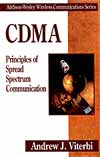 CDMA
Principles of Spread Spectrum Communication CDMA
Principles of Spread Spectrum Communication
By Andrew J. Viterbi
Viterbi presents the mathematical
bridge between Shannon's theories and today's most advanced wireless
technology.
"For many years, few noticed the full significance of [Shannon's]
baffling message. Andrew Viterbi, the famed author of the Viterbi
algorithm, now at Qualcomm, was one of the few. With Jacobs and Gilhousen,
they set out to fulfill the Shannon mandate. In the Telecosm today,
physics, optics, engineering, signals, and noise all are now beginning
to whirl centrifugally in Shannon's hyperspace. Just as Wavelength
Division Multiplexing is the wireline expression of Shannon's vision,
CDMA is the wireless form of "wide and weak."
—George Gilder, June 1998 GTR |
 Claude
Elwood Shannon Claude
Elwood Shannon
Collected Papers
By Claude E. Shannon
"As early as 1949,
Claude Shannon, the inventor of information theory, defined the
crucial tradeoffs of a regime of bandwidth abundance. Bandwidth,
he showed, can substitute both for switching and for power. The
new paradigm requires that successful companies of the new era pursue
this crucial trade off among the emerging technologies of sand and
glass and air."
—George
Gilder, July 1996 GTR
"The great astronomer and physicist Kepler wrote: "I cherish
more than anything else the Analogies.They know all the secrets
of nature." For the Microcosm, the model was to move to the center
of the sphere, at the atomic level, where power was concentrated.
With an uncanny analogy of communications to multi-dimensional geometry,
however, Claude Shannon in 1948 supplied a new spherical analogy
for the Telecosm. An MIT professor with close ties to Bell Laboratories,
he developed information theory to gauge the potential capacity
of any communications channel in the presence of noise. This work
took the theory of the Telecosm from the center of the sphere, where
power was unlimited and bandwidth scarce, to the surface of the
sphere, where the results were weirdly wide and weak and counterintuitive."
—George Gilder, June 1998 GTR
|
|

|

![]()





















